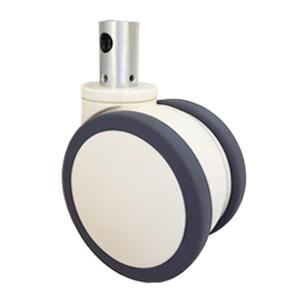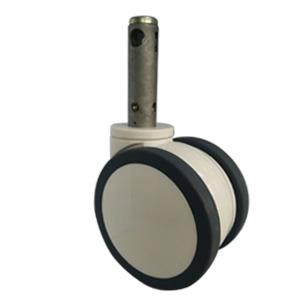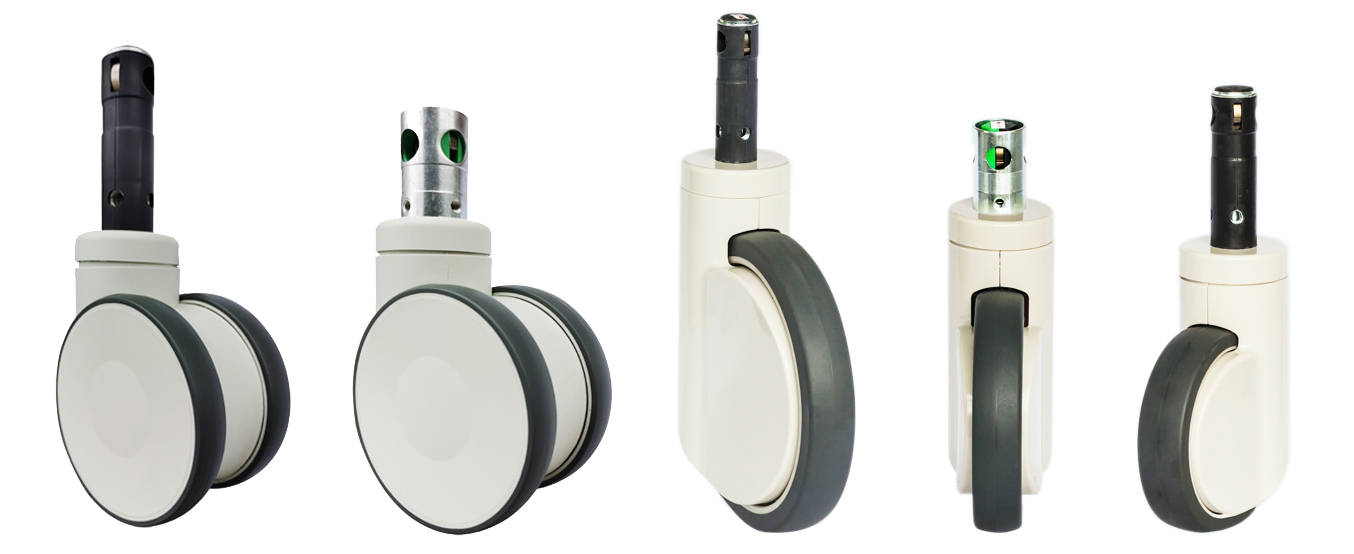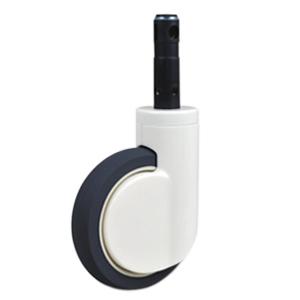Why We Need Central Locking Casters
Central locking casters are necessary for several reasons.
Central locking casters play a critical role in various types of casters. These mechanisms enable you to immobilize carts or other equipment, keeping them stationary in a fixed position. Although not all carts and equipment require central locking casters, they are essential in certain sectors, such as the medical industry, where their absence could mean the difference between life and death.
Locking casters often incorporate central brake systems to prevent unwanted movement of equipment when wheels gain momentum. The speed of the equipment, new wheels, and a smooth floor can all contribute to the challenge of controlling its movement, making it difficult to stop in many industries and facilities. In such cases, central brake casters offer a practical solution to avoid the hassle and potential danger of uncontrolled equipment movement.
There are a variety of functions and benefits that can be attributed to a central locking caster, so let us take a look at some of the main functions of a central locking caster.

What Does The Central Locking Mechanism Do?
As the name suggests, a central locking caster primarily serves to immobilize the casters, ensuring that the equipment remains stationary for as long as required. In addition to the central locking function, these casters often feature a braking mechanism that enables you to bring the equipment to a stop. They may also have a directional lock to prevent changes in the equipment’s direction and a total lock to keep it stationary indefinitely. Overall, central locking casters provide a versatile solution for securing equipment in various industries and applications.
Modern central locking casters feature user-friendly mechanisms that allow you to brake all wheels with a single pedal. This represents a significant improvement over past designs, which required significant effort and often multiple people to lock or brake large carts. Hospital beds, in particular, posed a challenge due to their four to six wheels, making it difficult to lock or brake them. Failure to secure the bed could potentially harm the patient. With the easy-to-use central locking mechanisms on modern casters, however, the process of immobilizing hospital beds and other equipment has become much simpler and safer.
Nowadays, the locking and braking mechanisms used on these beds are very smooth, and you can use a single nurse to brake the whole thing with one pedal. Similarly, it is also much easier to lock these casters because the locks available nowadays are much smoother than they used to be previously.
So essentially, locking mechanisms in casters are used to stop a cart or a bed while it is in momentum and makes it easy for the user to lock it and prevent it from moving as well.
There are quite a few features that are key to central locking casters. These include precision ball bearings, durable caster frame, and a metal key.
Twin wheels are the most common type of wheels that benefit from locking mechanisms. They are fast, have a high weight capacity, and provide a smooth ride. Moreover, twin wheels are easier to lock than single wheels, making them an ideal choice for applications that require frequent immobilization of equipment.
Why Is It Important?
In essence, central locking casters provide users with a great deal of convenience. With hospital beds and other heavy equipment, smooth casters can roll away unexpectedly, creating a potential hazard. Consequently, equipment movers have to remain vigilant and ensure that no unanticipated movements occur. Central locking casters eliminate this concern by providing a reliable means of immobilizing equipment, allowing movers to work more efficiently and safely.
When you are able to lock the bed or the cart in place, you can rest assured that it will not be moving unless you want it to. The cart movers can shift their focus to other things and not worry about the bed or the cart moving on its own.
Other than that, this mechanism is also essential for the well-being of the patient or the equipment that is on the machine. If the patient’s movement in the bed or the movement of the equipment on a cart allow the machine to start rolling away, the sudden jostling or the impact could be harmful.
For patients, it is almost a matter of life and death as well. Unprompted movements can cause sudden impacts, or it can allow the IVs and the other machinery attached to the patient to tug, which can actually be quite dangerous as well.
When the patient is taken back to their ward or room, you will need to lock the bed in place, so that movement by the patient or the attendees does not cause the bed to roll away again.
The best part of modern locking mechanisms is that all the wheels are locked in place at once, and you do not need to lock every single wheel separately. Naturally, the mechanism is installed in the center of the hospital bed or cart.
So essentially, a locking mechanism is crucial in many industries.

Where Is A Central Locking Caster Used?
While central locking mechanisms find utility in several industries, their most prevalent application is in hospital beds. Given that hospital beds accommodate patients who may move around independently, it is critical to immobilize the bed’s wheels and avoid any unintended movement. Central locking casters provide a reliable solution for this purpose, ensuring the safety and comfort of patients and healthcare workers.
Other than that, central locking casters are also often used elsewhere in the healthcare industry as well. This includes carts carrying equipment such as ECG machines, X-Ray equipment, and other such commodities as well. Central locking casters are crucial to the healthcare industry.
Conclusion
Central locking casters play a vital role in the medical and healthcare industry, particularly in hospital beds. Equipped with locking and braking mechanisms, these casters offer significant convenience to patients, nurses, and other caregivers. Furthermore, the locking and braking function is a critical safety feature that helps prevent accidents and injuries to patients. With central locking casters, patients can claim their space with ease and without any fear of harm, while healthcare providers can work more efficiently and safely.
To order your central-locking brake system or to have any questions answered, please click here.
Product Tag:central locking casters


